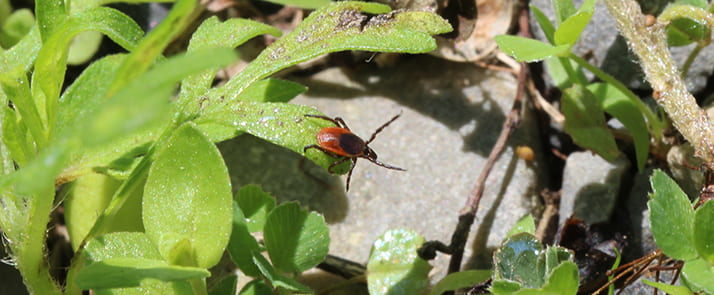It’s spring fever. That is what the name of it is. And when you’ve got it, you want — oh, you don’t quite know what it is you do want, but it just fairly makes your heart ache, you want it so! ~Mark Twain Part of what we want is to be outside. Unfortunately, that’s…Continue Reading Help! I found a tick on me! – Spring Edition 2023
Relief from Spongy Moth Irritation and Destruction on its Way

2022 looks to be another banner year for spongy moth but next year will likely not be as bad. …Continue Reading Relief from Spongy Moth Irritation and Destruction on its Way
WHAT’S BUGGING YOU? Announcing our Updated Website Resource… for YOU!
What’s Bugging You? If it’s ‘pests in your home or yard’, we’re here to help. Is something creeping in your cupboard? Your attic or garage? Are you hearing noises or seeing droppings or chewing damage inside or outside? They might be a sign you’ve got unwanted guests….Continue Reading WHAT’S BUGGING YOU? Announcing our Updated Website Resource… for YOU!
The Balancing Act of Wildlife Management (Part Three) – Guest Post by Lynn Braband
Guest post #3 by Lynn Braband, retired from our NYSIPM Program but still part of the ‘family’. Lynn’s career experience with wildlife management AND IPM led him to prepare blog posts that addressed the issues faced by wildlife managers in protecting properties while promoting wildlife. Can managing damage also benefit wildlife conservation? In four posts,…Continue Reading The Balancing Act of Wildlife Management (Part Three) – Guest Post by Lynn Braband
What Do Spotted Lanternfly Look Like?
SPOTTED LANTERNFLIES are named after flies, look like moths, but are actually planthoppers. They have piercing-sucking mouthparts which allow them to drill into the phloem of a plant to feed directly on the sugary sap—which comes out their other end as sticky, sweet honeydew. This planthopper is thought to have arrived as egg masses on…Continue Reading What Do Spotted Lanternfly Look Like?
Tick Bite Prevention – Dressing the Part – Rubber Boot Myth

When you see someone putting on his Big Boots, you can be pretty sure that an Adventure is going to happen. – A. A. Milne Last week I wrote a blog post on Tick Bite Prevention – Dressing the Part discussing why we make the recommendations we do. Today I want to address one commonly…Continue Reading Tick Bite Prevention – Dressing the Part – Rubber Boot Myth
Tick Bite Prevention – Dressing the Part

You can have anything you want in life if you dress for it. —Edith Head I don’t know about you, but what I want in life is to go outdoors and enjoy beautiful weather without contracting a life-changing illness. And, thank goodness, it IS possible. In the long list of items you can do to…Continue Reading Tick Bite Prevention – Dressing the Part
2019-2020 Annual Report: Ticks and Tick-Borne Diseases in New York
It’s more than the furtive crawling and sucking. Multiple tick species can carry multiple diseases. Prompted by an increasing number of tick-borne disease cases, Jody Gangloff-Kaufmann, Joellen Lampman, Elizabeth Lamb, and Matt Frye participated in an active surveillance project to determine risks to New Yorkers, their pets, and livestock. With the use of tick drags,…Continue Reading 2019-2020 Annual Report: Ticks and Tick-Borne Diseases in New York
Get “Into the Weeds” with New Podcast!
Bryan Brown, PhD, Integrated Weed Management Specialist, New York State IPM, Cornell University announces a new podcast. (links below!) With long hours in the tractor, some farmers are starting to listen to podcasts to stay entertained. Extension educators are picking up on this trend, creating educational material meant to be played in the tractor. Farmers…Continue Reading Get “Into the Weeds” with New Podcast!
2019-2020 Annual Report: Good News for Christmas Tree Growers… and Bees
Over the last 25 years, Douglas-fir trees have been the backbone of NY’s Christmas tree industry. Well-loved by buyers for sturdy branches, soft needles, and needle-retention, this popular tree is appreciated by growers for its quick growth, adaptability to various soil conditions, and tolerance of increasingly hot summers. Lately, however, some Christmas tree farmers are…Continue Reading 2019-2020 Annual Report: Good News for Christmas Tree Growers… and Bees